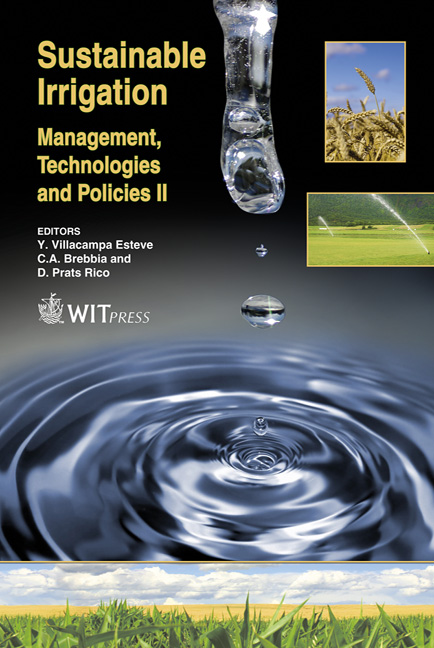Economic Instruments And Irrigation Water Management – A Comparative Study Of Private And District Irrigators In Alberta, Canada
Price
Free (open access)
Transaction
Volume
112
Pages
11
Page Range
3 - 13
Published
2008
Size
536 kb
Paper DOI
10.2495/SI080011
Copyright
WIT Press
Author(s)
H. Bjornlund, L. Nicol & K. Klein
Abstract
Irrigation activity in Alberta accounts for 71% of consumptive use of surface water in the province. Pressures on water resources are acute and are expected to intensify. Alberta’s answer to its water problems is contained in the Water for Life strategy which aims for a 30% increase in water use efficiency and productivity and the implementation of economic instruments if necessary. Irrigators’ contribution towards this endeavour will be imperative. But the foundation of irrigation activity in Alberta is grounded in a private and irrigation district water management system that has resulted in the development of two very distinct irrigation groups. The differences in the production activity and water management practices between private and district irrigators are striking. This study attempts to identify these distinguishing characteristics relating specifically to the adoption of irrigation technology and management practices and ascertain the effect of economic instruments which Alberta, until recently, has largely avoided using. Keywords: economic instruments, water efficiency, water productivity, irrigation, private irrigation, irrigation districts. 1 Introduction The majority of irrigation activity in Canada is concentrated in Alberta (64%) (Statistics Canada [8]). Within the province itself, irrigation is by far the major water consumer, accounting for 71% of consumptive use of surface water
Keywords
economic instruments, water efficiency, water productivity, irrigation, private irrigation, irrigation districts.





